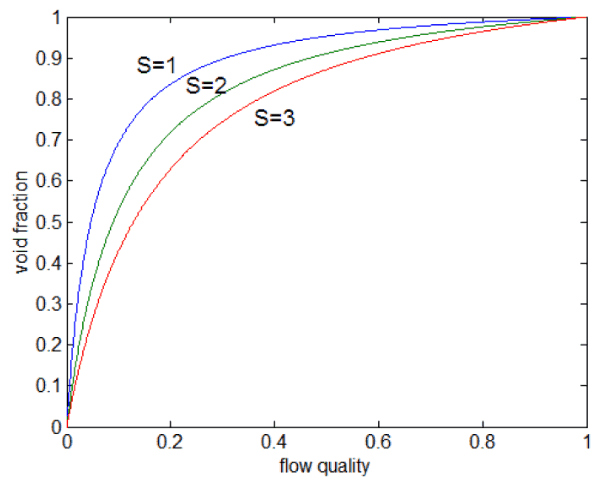Basic Parameters of Two‐phase Fluid Flow
In this section we will consider the simultaneous flow of gas (or vapor) and liquid water (as encountered in steam generators and condensers) in concurrent flow through a duct with cross-sectional area A. The subscripts “v” and “ℓ” indicate the vapor and liquid phase, respectively. Fundamental parameters that characterize this flow are:
Void Fraction
The void fraction, α, is one of the most important parameters used to characterize two-phase fluid flow, especially the gas-liquid flow.
Various geometric definitions are used for specifying this parameter. The void fraction in a two-phase fluid flow may be defined as:
- The fraction of the channel volume that is occupied by the gas phase. This void fraction is known as the volumetric void fraction.
- The fraction of the channel cross-sectional area that is occupied by the gas phase. This void fraction is known as the cross-sectional void fraction.
- The local void fraction refers to that at one single point or very small volume. Therefore it takes the values of 1 or 0.
For further purposes, we will assume a void fraction to be the fraction of the channel cross-sectional area that is occupied by the gas phase (i.e., cross-sectional void fraction) defined as:

The void fraction is important in the two-phase flow because it influences key physical parameters, such as viscosity, pressure drop, and heat transfer.
The relations between x, α, and S can be deducted, and the result is:

